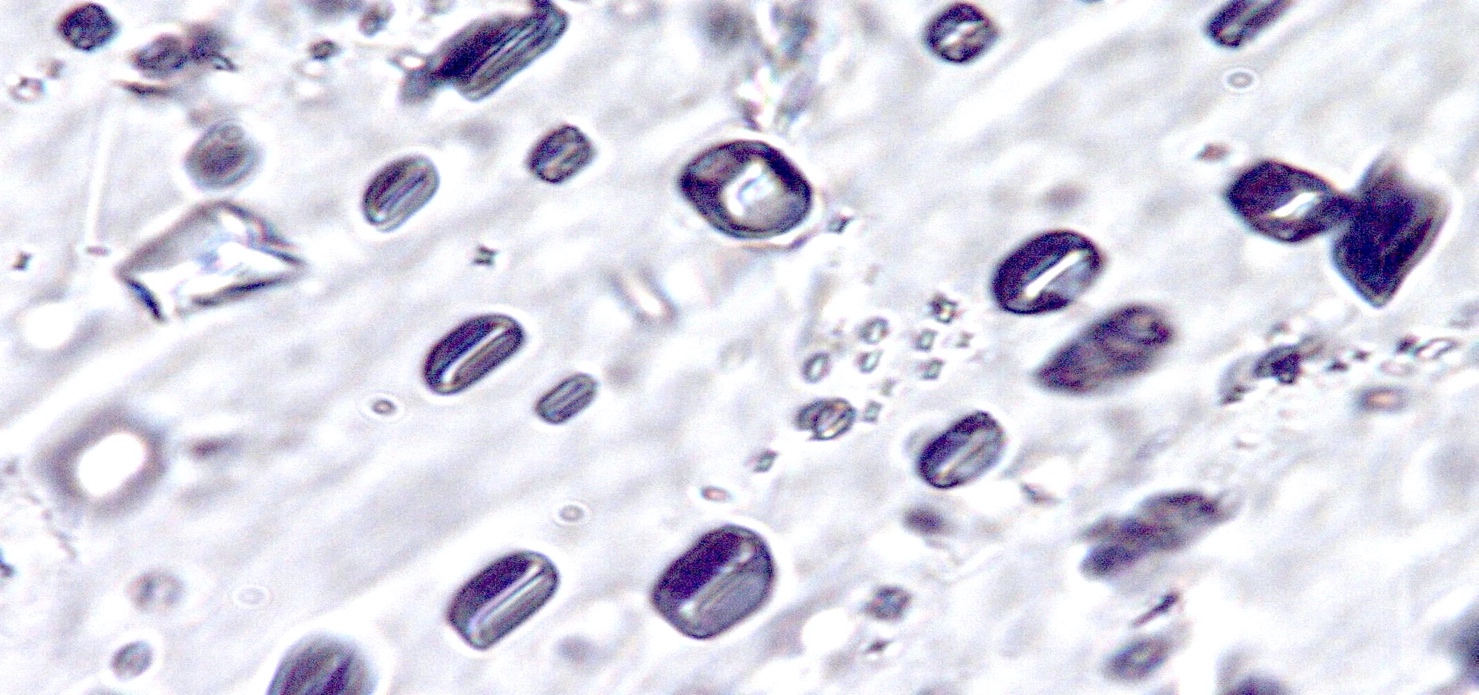Energy For Life From The Deep
07 Aug 2020 - Donato Giovannelli
An international collaboration lead by a researcher from the University of Torino unveils new mechanisms of hydrogen and methane formation in subduction zones

The study shows that subduction—the process by which one tectonic plate moves under another—may be responsible for the production of large amounts of hydrogen and methane, potentially sustaining microbial life in the subsurface biosphere. In the picture: H 2 -CH 4 -rich fluid inclusions from deep subduction zone rocks. Photo credit: Alberto Vitale Brovarone
Life on our planet is supported by different types of energy. The sun is the primary source of energy on the surface of our planet, while reduced chemical compounds provide energy to the large amount of microorganisms living in the deep subsurface. Among the chemical compounds used by subsurface microorganisms, molecular hydrogen (H2) and abiotic methane (CH4)—the rare type of methane that forms without the contribution of biology—played a fundamental role during the evolution of our planet and represent a primary target for planetary exploration. Additionally, they might have played a key role during life’s origin and contribute to our planet climate stability over long time scales. The geological genesis of these natural gases is promoted by the hydration of mantle rocks, rich in iron and magnesium, in a process known as serpentinization. The genesis of H2 and abiotic CH4 through serpentinization is known to take place at relatively shallow depths in the crust at mid-ocean ridges and on land where segments of oceanic lithosphere are brought onto continents. The study by Dr. Vitale Brovarone and co-workers, however, shows that serpentinization and the genesis of H 2 and abiotic CH 4 are happening at much greater depths, down to about 80 km, in subduction zones. Here, fluids released at depth by the subducting slab react with mantle rocks and produce large amounts of H2 and abiotic CH4.
“The possibility for serpentinization to generate strongly reduced fluids rich in H2 and CH4 at depth bears important implications for the study of the evolution of our planet”, said leadauthor Dr. Alberto Vitale Brovarone, a researcher from University of Torino and a recent ERC Consolidator Grant awardee. “Subduction has been active for a long time on Earth, and the large fluxes we have found might have played a key role in the emergence and evolution of the deep biosphere” he concluded. The authors analyzed tiny pockets of fluids trapped in deep subducted rocks exposed during the formation of the Alpine belt and found that H2 and CH4 are ubiquitous and accompanied by other important compounds such as hydrogen sulfide (H 2 S) and ammonia (NH3). “This result suggests that areas of convergence between tectonic plates, globally known for generating volcano ranges and strong earthquakes, can be important sources of hydrogen and methane, in addition to other molecules very important for life” said Dr. Donato Giovannelli, a coauthor of the study and a microbiologist at the University of Naples Federico II. “These deep flows may have provided energy to the deep microbial biosphere during the evolution of our planet” he added, “and might still be significant sources of energy to the deep biosphere”.
Original Article Vitale Brovarone A., Sverjensky D. A., Piccoli F., Ressico F., Giovannelli D. & Daniel I. 2020. Subduction hides high-pressure sources of energy that may feed the deep subsurface biosphere. Nature Communications, 11: 3880. https://www.nature.com/articles/s41467-020-17342-x